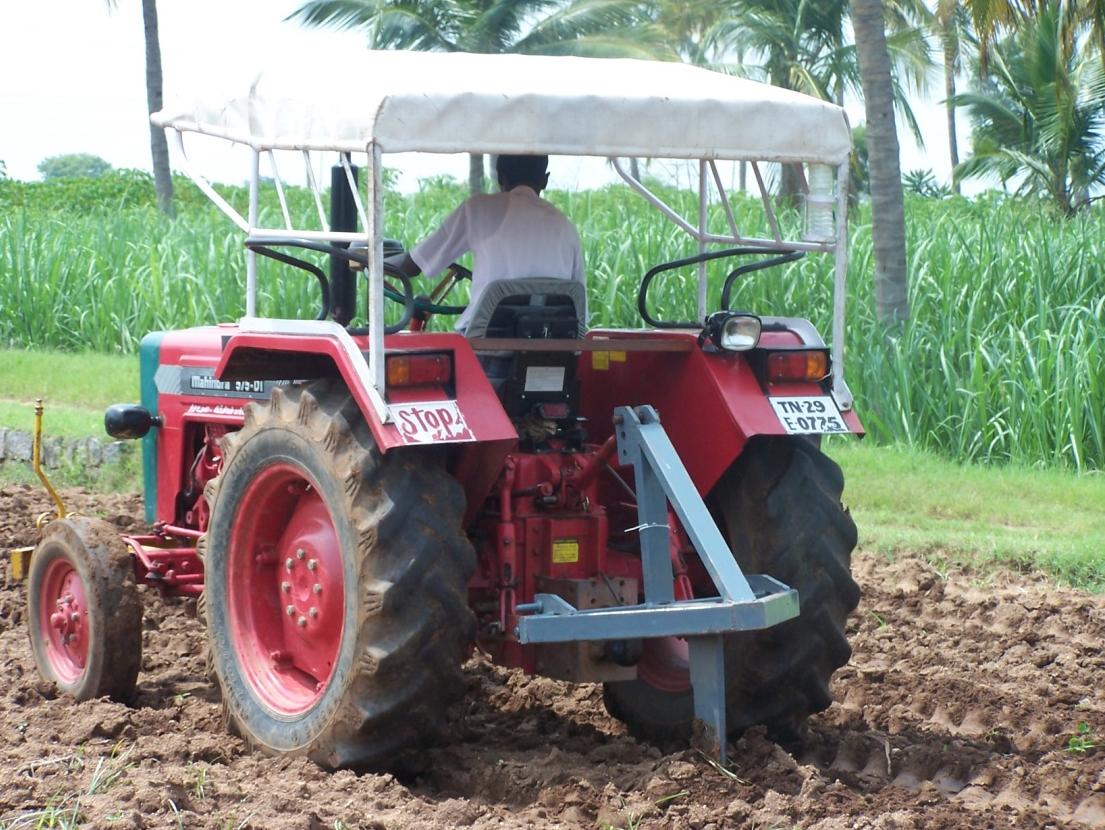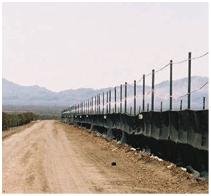Good Management Practices for use during tillage and harvest
- Chemical Irrigation
- Combining Tractor Operations
- Integrated Pest Management
- Artificial Wind Barrier
- Multi-Year Crop
- Planting Based on Soil Moisture
- Precision Farming
- Reduced Harvest Activity
- Reduced Tillage System
- Tillage Based on Soil Moisture
- Timing of a Tillage Operation
Chemical Irrigation means applying fertilizer, pesticide, or other agricultural chemicals to cropland through an irrigation system. Chemical irrigation reduces the number of passes across a field with tractors, sprayers, fertilizer applicators and machinery. Reducing the number of field operations reduces the emissions associated with those activities. All product application recommendations should be followed to ensure proper implementation. The field operations eliminated should be documented to demonstrate the implementation of the practice.
2. Combining Tractor Operations

Combining Tractor Operations means performing two or more tillage, cultivation, planting, or harvesting operations with a single tractor or harvester pass. Combining tractor operations reduces the number of passes or trips that a tractor, implement, harvester or other farming support vehicle makes across a field or unpaved surface, thereby reducing the amount of soil disturbed.
Suggestions for Implementation
- Combining tractor operations is most effective if implemented during the time of year when is most likely to be produced
- Applying fertilizer and herbicide in a single pass.
- Cultivating and fertilizing in a single pass. Using specialized machinery to bury stalks make new furrows in a single pass.
- Combining multiple heavy tillage operations in a single pass, for example, pulling a ring roller behind a disc.
3.Integrated Pest Management

Integrated Pest Management means the use of a combination of techniques including organic, conventional and biological farming practices. Integrated pest management creates beneficial insect habitat that reduces the use of herbicides/ pesticides, thereby reducing the number of passes for spraying. It also reduces soil compaction and the need for additional tillage.
Examples of Integrated Pest Management
Monitoring crop for pests occurrence to accurately and effectively apply control measures.
Incorporate biological practices into farming operation to reduce need for spraying.
4. Artificial Wind Barrier

Artificial Wind Barrier means a physical barrier to the wind. Artificial wind barriers disrupt the erosive flow of wind over unprotected cropland fields.
Suggestions for Implementation
Continuous board fences, burlap fences, crate walls, bales of hay and similar material can be used to control air currents and blowing soil. Barriers should be aligned across the prevailing wind direction. While 90 degrees or perpendicular is preferred, benefits can still be realized when barriers are aligned as close to perpendicular as possible. The distance of 10 times the barrier height is considered the protected area downwind of the barrier.
5.Multi-Year Crop
Multi-Year Crop means a crop, pasture, or orchard that is grown, or will be grown, on a continuous basis for more than one year. Surface covers, such as crops, pasture and orchards that are grown and maintained for a long duration, protect the soil surface from erosive winds. The longer a crop or cover is protecting the soil surface, the less time the surface is susceptible to wind erosion.
6.Planting Based on Soil Moisture
“Planting Based on Soil Moisture” means applying water to soil before performing planting operations.Planting based on soil moisture reduces during the planting operation and is effective from the time of planting until crop establishment. Planting based on soil moisture is one of the most efficient practices to reduce between planting and crop emergence. Moisture causes soil to crust and therefore is not easily transported into the air.
Suggestions for Implementation
Care should be taken to avoid over compaction of the soil, which could result in additional tillage operations. Irrigation should be applied as soon after soil preparation for planting as possible. After watering, a thin crust develops on the soil surface, which stabilizes it until planting. The time between bed lifting, irrigation and planting should be minimized as much as possible.
7.Precision Farming
Precision Farming” means using GPS to precisely guide farm equipment in the field. Precision farming reduces overlap and allows operations to occur during inclement weather conditions and at night thereby generating less PM.(See Precision farming for detail).
8. Reduced Harvest Activity
Reduced Harvest Activity” means reducing the number of harvest passes using a mechanized method to cut and remove crops from a field.Any time an operation takes place in a field, the soil structure can be modified and some could be released into the air. Reducing the number of harvest activities can keep the soil structure intact and reduce.
Suggestions for Implementation
An example of reduced harvest activity is the elimination of a harvest or rood pass from a cotton harvest. More is emitted during a normal cotton harvest season because the process requires several harvest passes to remove most of the crop from the plant. The rood process produces a significant amount of because of the nature of the operation.
9.Reduced Tillage System
Reduced Tillage System means reducing the number of tillage operations used to produce a crop. Any tillage operation in a field can modify the soil structure and possibly release into the air. Reducing the number of tillage activities can maintain the soil structure and help reduce.
Suggestions for Implementation
Minimum tillage system, Mulch tillage system and Reduced tillage system
10.Tillage Based on Soil Moisture
Tillage Based on Soil Moisture means applying water to soil before or during tillage, or delaying tillage to coincide with precipitation.Moisture binds soil particles and helps reduce the amount of released into the air. Fine dry soil can easily erode with increased wind speeds. Sufficient moisture levels can be achieved by irrigating before tillage or tilling after rain. Moisture can also allow large soil clods to form, after tillage, which reduces wind erosion.
Suggestions for Implementation
Fields should be irrigated to the depth of proposed cut prior to soil disruption, or tillage should be conducted to coincide with precipitation. The application of moisture or the date of tillage that coincided with precipitation should be documented.
11.Timing of a Tillage Operation
Timing of a Tillage Operation means performing tillage operations at a time that will minimize the soil’s susceptibility to generate.Adjusting the time of tillage operations can minimize the amount of time the soil surface is susceptible to wind erosion and generation of . When a field’s surface is smooth, dry, and consists of finer grained soil particles, the field is most susceptible to wind erosion.
Some examples of timing of tillage operations to reduce generation include
Reducing time between leveling (land planing) and bedding, which is when the beds act as miniature windbreaks. For example, a cotton production system where fields are tilled in the fall, land planed, and then bedded, would be less susceptible to wind erosion. Leave the field surface with large soil clods, for as long as possible prior to preparation of seed beds. |

